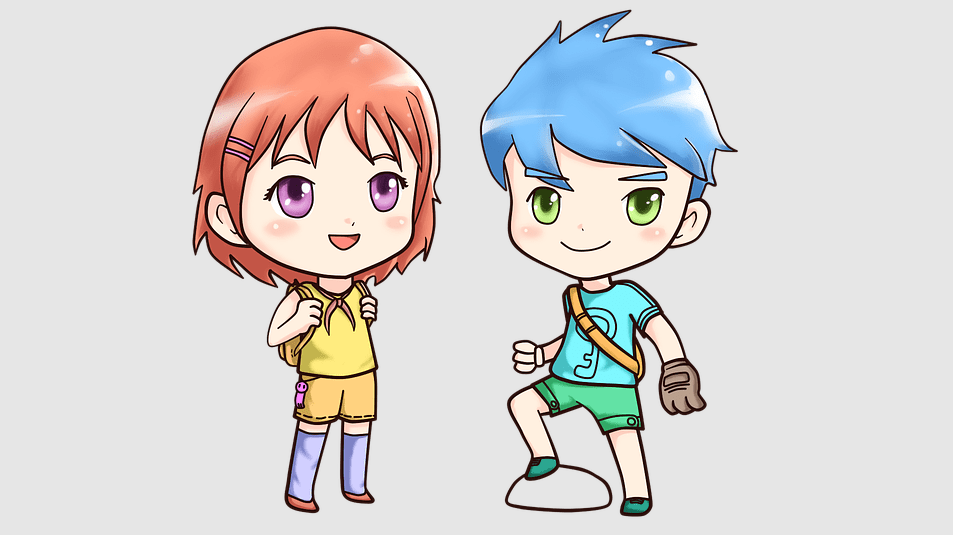Some videos appeal to some audiences better than others. And with the presence of so many different types of videos, you can stumble into a moment of analysis paralysis, leaving you uncertain of the most effective style to use for your current marketing campaign or business.
To fix that, we’re going to help you go over the different animation styles meant to boost your business, reviewing each of their strengths and how to utilize them best.
2D Character Animation
It’s not surprising that the list starts with 2D animation since it’s among the most broadly implemented and popular explainer video types used today. 2D animation is even popular in movies as well.
In 2D animation, both the scenes and characters are made in a two-dimensional space (hence the name), using perspective to bring the illusion of depth. This animation style is very versatile and allows for customization that, when done correctly, results in an emotion-evoking composition that can appeal directly to its prospective audience.
Motion Graphics Video Style
Motion graphic animations are mainly characterized by being straightforward and engaging.
It’s an ideal animation style for businesses that want to showcase complex services or products since the type works well at visually synthesizing massive amounts of information effectively and quickly.
In these video styles, clever graphic use aid in illustrating the message without distracting or being in the way of the intended marketing objective behind it. Colorful, dynamic, and fresh motion graphic videos snare audiences from the onset.
Whiteboard Animation
Whiteboard animation style provides the ideal platform to probe deeper into a service, process’ details, or product. It includes simulating black-line graphics rendered on a white background, showing the concepts or ideas in action.
2.5D Animation Style
The central concept behind the 2.5D style is simulating a 3D environment. The technique includes layering objects to generate a more fluid and sophisticated piece. Similar to seeing cut-outs roaming in a 3D-like space, even when every element is in 2D.
It incorporates every benefit of a motion graphics animation; however, its visual effect presents a more engaging, unique, and professional piece due to it emulating a different animation style. It does so without the added expense and hassle of 3D animation.
3D Animation Style
The 3D animation style stands out the most out of the different animation styles for delivering a high-quality, state-of-the-art finish. Its unique aesthetic quality makes it easier for audiences to get absorbed in what’s being displayed, as action can zoom into or rotate around the graphics to emphasize narrative.
However, this video style is hardly used for marketing purposes since producing 3D animations can be challenging to get the desired outcome and expensive. Plus, the longer production times (as any adjustment or change takes more time to achieve) make 3D not the best option when budget or time is a concern.
Stop Motion Video Style
These compositions utilize a specific style of video animation using a method for photographing an object as it’s maneuvered in tiny amounts, producing the illusion of motion if played. It’s most likely that you’ve already seen these video animations used in many animated films that use the advantage of this unique effect.
While exciting and unique, the major disadvantages for this animation style are its lack of flexibility to fix or change issues halfway through the production process and the cost. And even when you culminate in simulating the technique in a 3D animated environment, adaptability and cost are still problems to deal with.
Typography Explainer Video Type
This animation type is based on animating typographic fonts to articulate ideas. While it may appear very simplistic, it’s still a free medium to fit well with specific projects.
By expert implementation of animation and fonts, this type of animation can do an excellent job of reinforcing and underlining certain passages and making them settle in your audience’s memory.
Live-Action with 2D Animation
These compositions fuse live video footage and integrate them with animation and elements tracked to the video. The concept behind these types of animations is to build an atmosphere of interaction between the video and the graphics, with additional features of visual display, dynamism, and rhythm, generating a more enjoyable experience for the audience. Putting live-action footage aids in portraying the “human side” while the animation adds a new layer that you can use to strengthen the message.
Rotoscope Animation Style
Rotoscopy is segregated from other animation types due to how the technique correlates to live-action footage. Originally, the animation artists took a live-action film and used a glass panel (the rotoscope) to trace it frame by frame. Like many animation types, the rotoscope animation style has evolved, and it’s currently done mainly through software, resulting in more realistic and smoother movements.
The animation style is commonly used in movies and live-action commercials to get the actors to interact with animated objects or characters, but that doesn’t necessarily mean you can’t make an entire video using rotoscope animation.

